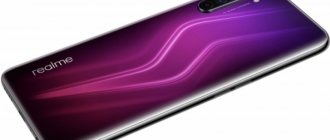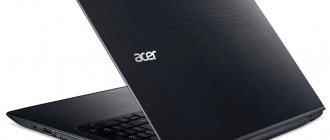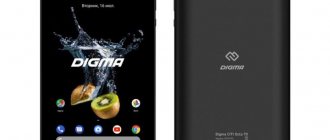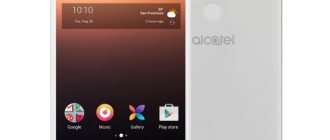The Oppo brand supplies premium models, but budget options are also found in their products. The company entered the Russian market in 2013, but then sales stopped due to low demand. And only in 2021, the company’s smartphones began to enjoy popularity after their return to the market.
When compiling this rating, we relied on the opinions of experts and consumers, and took into account purchase statistics from Rosstat.
The selection of mobile phones was carried out on the basis of performance, cost-quality ratio, and the quality of the cameras was also taken into account. Here are only the best options from the Chinese brand.
Rating of the TOP 12 best Oppo smartphones
This rating includes the best Oppo smartphones according to users and experts.
| Place | Name | Price |
| TOP 4 best Oppo smartphones in price/quality ratio for 2021 | ||
| 1 | OPPO Reno 3 Pro 12/256GB | Find out the price |
| 2 | OPPO A52 64GB | Find out the price |
| 3 | OPPO A72 128GB | Find out the price |
| 4 | OPPO A5 (2020) 3/64GB | Find out the price |
| TOP 4 best Oppo smartphones with NFC | ||
| 1 | OPPO A9 (2020) 4/128GB | Find out the price |
| 2 | OPPO Reno 3 8/128GB | Find out the price |
| 3 | OPPO Reno 4 Lite | Find out the price |
| 4 | OPPO Reno 2 8/256GB | Find out the price |
| TOP 4 best Oppo smartphones with a good camera | ||
| 1 | OPPO Reno 2Z 8/128GB | Find out the price |
| 2 | OPPO Reno | Find out the price |
| 3 | OPPO Reno Z 4/128GB | Find out the price |
| 4 | OPPO Find X2 12/256GB Dual Sim | Find out the price |
How to choose an Oppo smartphone?
The company is focused on the premium segment, so you can’t expect much budget from its products.
Mobile phones come in several lines, and the choice depends on the intended use:
- A – budget line with good performance for everyday tasks, will not surprise you with its gaming performance;
- F – models with an emphasis on camera capabilities, great for photography enthusiasts;
- R – flagship smartphones, suitable for undemanding games and equipped with good cameras;
- Find X is an advanced model for gamers and demanding buyers.
You can learn more about the ratings of smartphones for a specific price in these articles: models up to 30,000, 25,000, 20,000, 15,000, 10,000, 5,000 rubles.
TOP 4 best Oppo smartphones in price/quality ratio for 2021
OPPO Reno 3 Pro 12/256GB
A stylish option with good performance and autonomy has become one of the leaders in various 2021 ratings.
Two body colors, a protective tempered glass screen with an oleophobic coating, an aluminum reinforced frame - in addition to good cameras, an energy-intensive battery and a processor with good gaming performance, turn the model into a universal device.
The front camera is located behind a miniature peephole in the display, so it does not spoil the appearance of the device. The battery life is enough to watch video for 16-18 hours, and in the absence of load it will be enough for two to three days. Fast charging will allow you to reach 70% battery level in 25-30 minutes, and 100% in an hour.
The loud speaker has a fairly clear sound, but the low frequencies will not suit everyone. The cameras are high quality with good detail and color accuracy, but in night mode the shooting quality drops sharply.
Specifications:
- OS: Android 10;
- Weight: 196 g;
- Screen: AMOLED, multi-touch;
- Diagonal: 6.5″;
- Rear cameras: 48 MP;
- Front camera: 32 MP;
- Processor: Qualcomm Snapdragon 765G 5G, 8 cores;
- Built-in/RAM capacity: 256/12 GB.
pros
- premium design;
- quality of materials and workmanship;
- gaming performance;
- optical stabilization of cameras.
Minuses
- no 3.5 mm audio jack;
- not equipped with protection against dust and moisture.
OPPO A52 64GB
Mid-budget model with premium design and high-quality components. The screen looks larger due to
its frameless design, there is a small cutout for the front camera, and a fingerprint sensor is built into the power button. The back panel has a large protrusion for the main cameras.
The internal contents are also not disappointing - a good eight-core processor is good not only for everyday tasks like surfing the web or watching videos, but also for fairly demanding games. A good GPU will provide not only gaming performance, but also good photo post-processing.
The cameras produce detailed images with clear color reproduction, but in night mode noise and strong shadows appear. The battery for such performance is also not the smallest in terms of energy intensity - under high load it will provide up to 18 hours of autonomy.
Specifications:
- OS: Android 10;
- Weight: 196 g;
- Screen: IPS, multi-touch;
- Diagonal: 6.5″;
- Rear cameras: 12+8+2+2 MP;
- Front camera: 16 MP;
- Processor: Qualcomm Snapdragon 665, 8 cores;
- Built-in/RAM capacity: 256/12 GB.
pros
- autonomy;
- speaker quality;
- premium appearance;
- processor speed.
Minuses
- high price;
- low quality cameras.
OPPO A72 128GB
A budget model for 2021, which looks very much like an elite smartphone. The back of the case has a gradient
coloring created using special technology.
The screen has no frames, and the buttons are located along the edges. The fingerprint scanner is located in the power button. The screen itself has good color reproduction and deep shades. The pictures are not professional, but with excellent detail and post-processing.
In addition, the cameras have an excellent night mode, which produces almost no noise and ensures maximum detail in low light. Modern mobile games run without any problems thanks to the processor, although some demanding applications can still cause glitches at maximum graphics settings.
Specifications:
- OS: Android 10;
- Weight: 188 g;
- Screen: TFT, multi-touch;
- Diagonal: 6.5″;
- Rear cameras: 48+8+2+2 MP;
- Front camera: 16 MP;
- Processor: Qualcomm Snapdragon 665, 8 cores;
- Built-in/RAM capacity: 128/4 GB.
pros
- quality of materials and workmanship;
- availability of NFC;
- game parameters;
- separate slot for memory card.
Minuses
- takes a long time to charge;
- plastic body.
OPPO A5 (2020) 3/64GB
Another member of the 2020 line from ORRO. Like others, this smartphone is distinguished by its luxurious appearance.
appearance, high-quality hardware and reasonable cost.
The durable plastic case looks quite expensive; at first glance, the smartphone cannot even be classified as in the middle price segment. On the back panel there is a neat camera unit and a fingerprint scanner.
The screen with an aspect ratio of 20:9 is designed for convenient viewing of wide-screen videos and for playing games, but operating the gadget with one hand with such proportions is not very convenient.
An eight-core processor platform with a clock frequency of up to 2 GHz, together with the Adreno 610 graphics chipset, makes it possible to play demanding games at high graphics settings, and 3 GB of RAM eliminates freezes even in large programs or games.
The 5000 mAh battery can last almost 15 hours without recharging while watching FullHD video at 50% screen brightness - for a budget smartphone this is more than a good indicator.
Specifications:
- OS: Android 9.0;
- Weight: 195 g;
- Screen: TFT, multi-touch;
- Diagonal: 6.5″;
- Rear cameras: 48+8+2+2 MP;
- Front camera: 8 MP;
- Processor: Qualcomm Snapdragon 665, 8 cores;
- Built-in/RAM capacity: 64/3 GB.
pros
- stereo speakers;
- separate slot for memory card;
- good equipment;
- large display.
Minuses
- low screen resolution;
- Photo quality suffers in low light.
? Which OPPO smartphones have arrived in Russia?
Russian expansion began with the OPPO F5 . They entered in a big way: Yegor Creed became the face of the new product, and the smartphone itself appeared in four large network stores on November 25th.
The main feature of this model is selfie . The front camera here is cooler than the main one, 20 megapixels versus 16. But megapixels alone are not enough for cool selfies, so OPPO F5 received the “SelfieTune” function. Thanks to it, the smartphone recognizes facial features, adjusting the brightness and contrast, and slightly retouching the portrait.
Professional makeup artists and photographers participated in the creation of SelfieTune. Don't think that the output will be the same blurry portraits; the smartphone scans more than 200 points of the face, compares it with an extensive database and makes individual adjustments.
The bokeh effect and other newfangled things are also in place.
The smartphone runs on Android 7.1 with built-in ColorOS 3.2 shell. This is perhaps the most accurate cast of iOS in the camp of green robots. Rejection is minimal even among longtime Apple fans.
All other attributes of a flagship are in place: a six-inch 18:9 screen, thin frames, 4 GB of RAM and 8 cores in the processor. 32 GB of internal memory is enough for the first time, then you can insert a card of at least 256 GB.
It turned out to be a powerful device, no matter how you look at it. The smartphone can be purchased for RUB 24,990. in retail stores.
OPPO F5 is not the only offering on the market. For those who do not need such power, the F5 Youth with less RAM and a different camera is suitable, and fans of top-end hardware are offered to take the F5 6 GB - with six gigabytes of RAM and twice as much storage. The price breakdown is as follows: 18,990 rubles. for the younger model and 29,990 rubles. for the eldest.
TOP 4 best Oppo smartphones with NFC
OPPO A9 (2020) 4/128GB
New this year, released by ORRO with the motto “Even in the middle price segment, our smartphones can give the user everything.”
The shapes do not sparkle with originality - a standard elongated screen, a fingerprint scanner on the rear panel under the camera block, a teardrop-shaped cutout at the top of the screen for the front camera. But the quality of the materials is excellent. Although the body is made of plastic, it is quite strong, and the screen is protected by Gorilla Glass 3+.
Thin frames allow the display to occupy about 82% of the front surface of the smartphone, which is on par with top manufacturers like Xiaomi or Sony. In addition, the use of Sunlight technology makes it possible to clearly see the image on the screen even under sunlight.
The autonomy of the gadget is excellent - in communication mode, it works for two days on a single charge. In case of more active use, for example, playing video in high definition, the smartphone can work for almost 20 hours without recharging.
The eight-core processor standard for this line handles even demanding games at minimum graphics settings. The manufacturer also provides a game mode that optimizes the process and helps you avoid problems with game freezes.
Specifications:
- OS: Android 10;
- Weight: 170 g;
- Screen: AMOLED, multi-touch;
- Diagonal: 6.4″;
- Rear cameras: 48+13+8+2 MP;
- Front camera: 44 MP;
- Processor: MediaTek Helio P90, 8 cores;
- Built-in/RAM capacity: 128/8 GB.
pros
- design solution;
- autonomy at its best;
- high-quality cameras;
- good gaming performance;
- availability of NFC.
Minuses
- no protection from dust and moisture;
- The memory card is installed in place of the second SIM card.
OPPO Reno 3 8/128GB
Discreet design, characteristic of all smartphones of the brand, with a plastic back and aluminum frame, durable glass
display, drop-shaped cutout of the front camera - these are what can be called the characteristic features of this smartphone.
The model has a good speaker with clear sound and a sufficient volume level, although audiophiles will not be surprised by its quality.
Particularly notable is the battery, which supports fast charging to half charge in less than half an hour. Supports low voltage mode, allowing you to leave the gadget on charge all night.
The energy-intensive battery holds a charge for 24 hours at low load. The cameras are distinguished by a wide range of capabilities, dynamic range, detail and color depth in images. Night shooting is a little noisy, but the quality of the frames is several times higher compared to analogues.
A modern processor will provide good gaming performance, although some 3D games should be run at medium settings to avoid crashes and freezes.
Specifications:
- OS: Android 10;
- Weight: 170 g;
- Screen: AMOLED, multi-touch;
- Diagonal: 6.4″;
- Rear cameras: 48+13+8+2 MP;
- Front camera: 44 MP;
- Processor: MediaTek Helio P90, 8 cores;
- Built-in/RAM capacity: 128/8 GB.
pros
- design;
- high level of autonomy;
- high-quality multifunctional cameras;
- gaming performance.
Minuses
- The memory card is installed in place of the second SIM card.
OPPO Reno 4 Lite
The gadget can provide all the modern pleasures of use, starting from the aesthetic component and
ending with a high level of autonomy.
The display and rear surface are made of Gorilla Glass 3. The front camera is hidden behind a tiny double cutout, the rear cameras protrude slightly above the cover. The pictures come out with contrast and richness, comparable in part to shooting with professional cameras. Night photography is somewhat grainy, and image quality is worse than its peers.
The mono speaker won't surprise you with its volume or sound quality, but it does its job well. The processor does not crash or slow down only in undemanding games; the device handles heavy modern applications several times worse.
Multitasking is also not amazing; a large number of tabs in the browser can significantly reduce the response speed.
Specifications:
- OS: Android 10;
- Weight: 164 g;
- Screen: Super AMOLED, multi-touch;
- Diagonal: 6.43″;
- Rear cameras: 48 MP;
- Front camera: 16 MP;
- Processor: MediaTek Helio P95, 8 cores;
- Built-in/RAM capacity: 128/8 GB.
pros
- appearance;
- there is a standard 3.5 mm jack;
- optical fingerprint scanner;
- good shooting quality.
Minuses
- overpriced.
OPPO Reno 2 8/256GB
The model with good cameras and a high-quality screen is popular among users and has received a lot of
rave reviews from experts.
The display with Corning Gorilla Glass 6 does not have a cutout for the front camera - it is located in the corner retractable module. Charge stability is ensured by a “capacious” battery, capable of playing video in the best resolution for almost 20 hours, and a full charge occurs within an hour.
There is only one speaker, so the sound quality is average, but stable and with a good volume reserve. Excellent cameras with highly detailed frames will be appreciated by photography enthusiasts.
The processor is practically a gaming processor, easily copes with modern games that are demanding on graphics and performance.
Specifications:
- OS: Android 9.0;
- Weight: 189 g;
- Screen: AMOLED, multi-touch;
- Diagonal: 6.5″;
- Rear cameras: 48+8+13+2 MP;
- Front camera: 16 MP;
- Processor: Adreno 618, 8 cores;
- Built-in/RAM capacity: 256/8 GB.
pros
- exclusive retractable front camera mechanism;
- frameless display with brightness reserve;
- gaming performance;
- autonomy and charging speed.
Minuses
- does not have protection from dust and moisture.
Review of the Oppo Find X smartphone with an unusual sliding panel
This summer, the Chinese company Oppo presented its unusual mobile product at the Louvre in Paris - the flagship Find X smartphone with an innovative camera, Super VOOC fast charging technology and support for 3D calls on the 5G network. In addition, Find X became the first smartphone released in the Find line in the last four years. Thus, the new model marked the revival of the Find line, the hallmark of which has always been the introduction of the most advanced technologies.
Key Features of Oppo Find X
- SoC Qualcomm Snapdragon 845, 8 cores (4 × Kryo 385 @2.8 GHz + 4 × Kryo 385 @1.8 GHz)
- GPU Adreno 630
- Operating system Android 8.1, ColorOS 5.1
- Touch display Super AMOLED 6.4″, 2340×1080 (19.5:9)
- Random access memory (RAM) 8 GB, internal memory 128/256 GB
- No microSD support!
- Nano-SIM support (2 pcs.)
- GSM/WCDMA networks
- LTE Cat.18 networks FDD B1/2/3/4/5/7/8/12/13/17/18/19/20/25/26/28/29/32/66, TD B34/38/39 /40/41
- Wi-Fi 802.11a/b/g/n/ac (2.4 and 5 GHz)
- Bluetooth 5.0
- NFC is missing!
- Dual GPS, A-GPS, Glonass, BDS
- USB Type-C, USB OTG
- There is no 3.5mm audio output!
- Main camera 20 MP, f/2.0 + 16 MP, f/2.0; 4K video
- Front camera 25 MP, f/2.0
- Proximity and lighting sensors, magnetic field, accelerometer
- 3400 mAh battery, Super VOOC fast charging
- Dimensions 157×74×9.6 mm
- Weight 186 g
| Average price of Oppo Find X (8/128 GB) | Average price of Oppo Find X (8/256 GB) |
| find out prices | find out prices |
| Oppo Find X (8/128GB) retail offers | Oppo Find X (8/256GB) retail offers |
| find out the price | find out the price |
Appearance and ease of use
The Oppo Find X has a luxurious, eye-catching design that is somewhat reminiscent of Samsung's latest "borderless" Galaxy products. Here, the same strongly curved side edges of the glass panels smoothly merge with an elegant metal frame that changes its width from the top and bottom ends to the sides. The creators themselves call it “panoramic design.”
Perhaps this is one of the disadvantages: the side edges, narrowed to the point of being pointed, although streamlined, are not held very securely in the hand due to the small contact area. A heavy and large smartphone with such slippery surfaces simply turns by itself in the palm of your hand; a case is definitely needed here.
And since any kind of case won’t fit here due to the retractable upper part of the case, it’s good that they included their own in the kit. Although it is not very beautiful, and besides, it is hard, but at least it does not prevent the top from moving out.
The front and rear cameras, along with the flash and sensors, are hidden in a sliding panel. It automatically leaves as soon as the camera is activated or authorization occurs using the owner’s face. You can push it back manually - or it will retract itself when the camera turns off.
It’s curious: the sensor of a smartphone falling from a height of human height manages to react and push the camera inside in just 0.6 seconds, so this happens even before it hits the ground.
Overall, the decision is controversial. Shooting videos and taking photographs while holding the smartphone in a horizontal position is quite unusual; this entire structure has to be held in a special way. But over time, of course, you get used to it.
On the front side, all the usual elements usually located above the screen are also hidden in a sliding panel. What is all this for? According to the creators, this ensures a sophisticated appearance of the case and a convenient placement of the smartphone in the hand. After all, the screen now occupies a record 93.8% of the area of the front part of the smartphone.
Accordingly, there is no LED indicator here at all, and a special technology was invented to operate the proximity sensor. That is, the sensor itself is also located in the retractable part, but during a telephone conversation the screen is still blocked in a clever way when brought to the ear. It is described as follows: “The sensor detects the approach of the smartphone to the ear and starts the function of automatically turning off the screen. An infrared sensor, which is located under the screen, detects the distance between the ear and the screen during a phone call, and when this distance increases, the screen is activated again. "Oppo engineers tested the sensor in a variety of conditions to ensure it performs as well as traditional distance sensors." The developers even posted a warning on the website: “Any film or opaque cover may block light passing through the sensor.”
In total, the Find X hidden module contains (from different sides): a light sensor, an infrared camera, a proximity sensor, a speaker, a 3D face recognition sensor, a dot projector, as well as front and main dual cameras.
The tray for two Nano-SIM cards is embedded in the bottom end, and it is not hybrid; you cannot insert a memory card into it. The cards are attached in a special compact way, back to back, with the contacts facing outward. The tray cover has a rubberized gasket, although the manufacturer does not officially indicate the presence of water protection anywhere.
The main speaker is located at the bottom end, where the USB Type-C connector is also located. The speakers do not work in stereo mode. The smartphone does not have a 3.5 mm audio output for headphones.
Oppo Find X is available in two colors, they are called “Ruby Bordeaux” and “Indigo Sapphire”, in both cases the gradient transition from dark to light is clearly visible. Both shimmer in the rays and look equally luxurious.
Screen
Oppo Find X is equipped with a 6.4-inch Super AMOLED display with a resolution of 2340×1080, covered with Gorilla Glass 5. The physical dimensions of the screen are 68×148 mm, the frame is as thin as possible, approximately 2-3 mm on each side.
A detailed examination using measuring instruments was carried out by the editor of the “Monitors” and “Projectors and TV” sections Alexey Kudryavtsev . Here is his expert opinion on the screen of the sample under study.
The front surface of the screen is made in the form of a glass plate with a mirror-smooth surface that is scratch-resistant. Judging by the reflection of objects, the anti-glare properties of the screen are better than those of the Google Nexus 7 (2013) screen (hereinafter simply Nexus 7). For clarity, here is a photo in which a white surface is reflected in the switched off screens (on the left - Nexus 7, on the right - Oppo Find X, then they can be distinguished by size):
The screen of the Oppo Find X is slightly darker (photo brightness is 107 versus 113 for the Nexus 7, glare curved edges are not taken into account). The ghosting of reflected objects on the Oppo Find X's screen is very weak, indicating that there is no air gap between the layers of the screen. Due to the smaller number of boundaries (glass/air type) with very different refractive indices, such screens look better in conditions of intense external illumination, but their repair in the case of cracked external glass is much more expensive, since the entire screen has to be replaced. The outer surface of the screen has a special oleophobic (grease-repellent) coating (better in efficiency than that of the Nexus 7), so fingerprints are removed more easily and appear at a slower rate than with regular glass.
With manual brightness control and when the white field was displayed in full screen, the maximum brightness value was about 410 cd/m². You also need to take into account that in this case, the smaller the white area on the screen, the lighter it is, that is, the actual maximum brightness of the white areas will almost always be higher than the specified values. As a result, taking into account the excellent anti-glare properties, readability during the day in the sun should be at a good level. The minimum brightness value is 1.7 cd/m², so in complete darkness the brightness can be reduced to a comfortable value. There is automatic brightness adjustment based on the light sensor (it is located on the upper right side). However, this function does not work well: for example, after getting up in bright light, the screen brightness remains maximum even in complete darkness and even after putting the smartphone into standby mode and then turning it on. At the same time, the light sensor itself works properly and produces values close to real ones. We hope that automatic brightness adjustment will work normally after updating the system.
At any brightness level there is significant modulation with a frequency of 60 or 240 Hz. The figure below shows brightness (vertical axis) versus time (horizontal axis) for several brightness settings:
It can be seen that at maximum and average brightness the modulation amplitude is not very large; as a result, there is no visible flicker. However, with a strong decrease in brightness, modulation appears with a large relative amplitude; its presence can already be seen in a test for the presence of a stroboscopic effect or simply with rapid eye movement. Depending on individual sensitivity, this flickering may cause increased fatigue.
This screen uses a Super AMOLED matrix - an active matrix on organic light-emitting diodes. A full-color image is created using subpixels of three colors - red (R), green (G) and blue (B), but there are half as many red and blue subpixels, which can be referred to as RGBG. This is confirmed by a fragment of a microphotograph:
For comparison, you can see the gallery of microphotographs of screens used in mobile technology.
In the fragment above you can count 4 green subpixels, 2 red (4 halves) and 2 blue (1 whole and 4 quarters), and by repeating these fragments, you can lay out the entire screen without breaks or overlap. For such matrices, Samsung introduced the name PenTile RGBG. The manufacturer calculates the screen resolution based on the green subpixels; based on the other two, it will be two times lower. Of course, there is some unevenness of contrast borders and other artifacts. However, due to the high resolution, they only minimally affect the image quality.
The screen has excellent viewing angles. True, the white color, when deviated even at small angles, alternately acquires a barely visible blue-green and pinkish tint, but the black color remains simply black at any angle. It is so black that the contrast setting is not applicable in this case. For comparison, here are photographs in which identical images are displayed on the screens of Oppo Find X and Nexus 7, while the screen brightness is initially set to approximately 200 cd/m², and the color balance on the camera is forcibly switched to 6500 K.
There is a white field perpendicular to the screens:
The uniformity of brightness and color tone of the white field is very good. There is a subtle darkening towards the curved edges, but the Nexus 7's LCD screen still has much poorer white field uniformity.
And a test picture:
The colors on the Oppo Find X's screen are oversaturated (note the tomatoes, bananas, napkin and face shade) and the color balance is slightly off. Let us remind you that the photograph cannot serve as a reliable source of information about the quality of color rendering and is provided only for conditional visual illustration. In particular, the pronounced reddish tint of the white and gray fields present in photographs of the Oppo Find X screen is visually absent when viewed perpendicularly, as confirmed by hardware tests using a spectrophotometer. The reason is that the spectral sensitivity of the camera sensor does not exactly match this characteristic of human vision.
Now at an angle of approximately 45 degrees to the plane and to the side of the screen. White field:
The brightness at an angle for both screens has decreased noticeably (to avoid strong darkening, the shutter speed has been increased compared to previous photos), but in the case of the Oppo Find X the drop in brightness is less. As a result, with formally the same brightness, the Oppo Find X screen visually looks much brighter (compared to LCD screens), since you often have to look at the screen of a mobile device from at least a slight angle.
And a test picture:
It can be seen that the colors have not changed much on both screens and the brightness of the Oppo Find X at an angle is noticeably higher. However, the darkening on the far curved edge and the lightening on the near one are well expressed.
Switching the state of the matrix elements is almost instantaneous, but at the turn-on edge there may be a step with a width of approximately 17 ms (which corresponds to a screen refresh rate of approximately 60 Hz). For example, this is what the dependence of brightness on time looks like when moving from black to white and back:
In some conditions, the presence of such a step can lead to plumes trailing behind moving objects. However, dynamic scenes in films on OLED screens are distinguished by high clarity and even some “jerky” movements.
A gamma curve constructed using 32 points with equal intervals based on the numerical value of the shade of gray showed that there is no significant blockage either in the highlights or in the shadows. The exponent of the approximating power function is 2.22, which is quite a bit higher than the standard value of 2.2. In this case, the real gamma curve deviates slightly from the power-law dependence:
Let us recall that in the case of OLED screens, the brightness of image fragments dynamically changes in accordance with the nature of the displayed image - it decreases for generally light images. As a result, the resulting dependence of brightness on hue (gamma curve) most likely slightly does not correspond to the gamma curve of a static image, since the measurements were carried out with sequential display of shades of gray on almost the entire screen.
The color gamut is much wider than sRGB and even slightly wider than DCI-P3:
The spectra of the components are very well separated, which allows for wide coverage:
Note that on screens with a wide color gamut, without appropriate correction, the colors of regular images optimized for sRGB devices appear unnaturally saturated.
By default, the color temperature of the white and gray fields is high, about 7500 K, but in the screen settings there is a color temperature adjustment slider:
After correction (as in the picture above), the balance becomes better: the color temperature is closer to 6500 K, while in a significant portion of the gray scale this parameter does not change very much, which improves the visual perception of color balance. The deviation from the blackbody spectrum (ΔE) remains below 10 units, which is considered a good indicator for a consumer device:
(The darkest areas of the gray scale can be ignored, since color balance there is not very important, and the error in measuring color characteristics at low brightness is large.)
Of course, there is a fashionable mode with reduced intensity of the blue component:
Let us recall that, in principle, bright light can lead to disruption of the daily (circadian) rhythm (see the article about the iPad Pro with a 9.7-inch display), but everything can be solved by adjusting the brightness to a comfortable level, and distorting the color balance, reducing the contribution of blue , makes absolutely no sense.
Let's summarize. The screen has a fairly high maximum brightness and has excellent anti-glare properties, so the device can be used outdoors even on a sunny summer day. In complete darkness, the brightness can be reduced to a comfortable value. Unfortunately, the mode with automatic brightness adjustment in the current firmware does not work adequately. The advantages of the screen include an effective oleophobic coating and good color balance (after a small correction). At the same time, let us recall the general advantages of OLED screens: true black color (if nothing is reflected in the screen), good uniformity of the white field, noticeably less than that of LCDs, and a drop in image brightness when viewed at an angle. Disadvantages include an overly wide color gamut and screen flickering at low brightness. For users who are particularly sensitive to flicker, this may cause increased fatigue. Separately, we note that from the point of view of image quality, curved edges are only harmful, since they introduce color tone distortions and change the brightness at the edges of the picture, and in ambient light conditions they lead to inevitable glare along at least one long side of the screen. However, overall the screen quality is high.
Camera
The front camera of Oppo Find X has a 25 MP sensor resolution and an F2.0 aperture lens. The developers call it a “smart 3D camera” that can analyze the face, nose, eyes and other features to make the pictures look more natural. The front camera does not have an LED flash, but the description calls the illumination from the screen “a three-dimensional lighting technique for artistic portraits.” That is, the screen illuminates the face before shooting, flashing several times with different shades of color.
There is a portrait mode with background blur, which the camera does well. And in general, the shooting quality is excellent: the image is bright, detailed, with correct color rendition and good sharpness.
The rear camera uses two modules with a resolution of 20 MP and 16 MP, both lenses have an f/2.0 aperture. The camera has optical image stabilization and 5x hybrid zoom.
This year, it has become fashionable for manufacturers to use so-called “artificial intelligence” (AI) everywhere, and this smartphone also uses it. AI algorithms allow the camera to recognize objects and landscapes (artificial intelligence technology identifies 800 different scenes), as well as “manage” the depth of field after shooting.
Examples of shooting with the main camera:
The camera didn't surprise us with anything. Using wide-angle lenses in smartphones (where they cannot be changed on the fly) makes sense, but one must understand that a significant part of the frame in this case will have distorted geometry, and the very edges will also radically lose sharpness. If the owner of Oppo Find X wants his pictures to fit entirely on the screen of his smartphone, then he will have to shoot in a very “non-canonical” mode with an aspect ratio of 19.5:9, and this is not at all “photographic” 4:3. In addition, when the lighting is not very bright, noise is already clearly visible in the pictures, and in many cases, incomprehensible areas of blur. At the same time, the camera beautifully blurs the background, confidently shoots macro and provides a quite decent optical zoom of 2× (it is better, as usual, not to use hybrid zoom when the shooting result is “closer” using digital zoom). In short, the camera is good, but far from flagship, and for an expensive smartphone that makes a big show out of getting the camera ready for combat, the result does not look impressive.
Video can be shot in 4K format at 30 fps, there is slow motion shooting in a maximum resolution of 1080p, other parameters are not specified. Video is always encoded in H.264, there is no choice of codec. It’s also not entirely clear whether optical stabilization works for video shooting, but in practice you don’t feel it at all, and there are no options for this in the settings. The video quality itself is not bad, but shooting handheld on the go without stabilization is useless. In addition, there is a standard disease of most Asian cameras - unnatural, oversaturated, caustic paints. The sound is recorded clearly, and the noise reduction system works adequately.
- Video No. 1 (45 MB, 3840× [email protected] fps, H.264, AAC)
- Video No. 2 (87 MB, 3840× [email protected] fps, H.264, AAC)
- Video No. 3 (84 MB, 3840× [email protected] fps, H.264, AAC)
- Video No. 4 (84 MB, 1920× [email protected] fps, H.264, AAC)
- Video No. 5 (84 MB, 1920×1080, slo-mo, H.264, AAC)
Telephone and communications
The modem built into the Qualcomm Snapdragon 845 SoC supports many LTE frequency bands, including all three LTE FDD bands used in Russia (Band 3, 7, 20). In practice, within the city limits of the Moscow region, the device demonstrates reliable operation in wireless networks, does not lose connection, and quickly restores connection after a forced interruption.
There are also no complaints about the operation of the Wi-Fi module (2.4 and 5 GHz, there is support for 802.11ac), Bluetooth is version 5.0, but again there is no NFC module.
The navigation module works with GPS (with A-GPS), and with the domestic Glonass, and the Chinese Beidou. The first satellites, even during a cold start, are detected quickly, within the first seconds, and the positioning accuracy does not cause any complaints. Naturally, there is a magnetic compass, necessary for navigation programs.
The phone application supports Smart Dial, that is, while dialing a phone number, a search is immediately carried out by the first letters in contacts. Methods for setting up sorting and display of contacts are standard for the Android interface. VoLTE support is available. The vibration alert is not the strongest.
The hardware platform allows the smartphone to support both SIM cards in 4G mode at the same time. This way, the voice SIM card will work in 4G standby mode even if another card is assigned to 4G data. The cards operate in Dual SIM Dual Standby mode, there is only one radio modem.
Software and multimedia
As a software platform, Oppo Find X uses Android OS version 8.1, but with its own shell. The interface is typically Chinese: it is clumsily designed, has a maximum number of settings, very wide support for gestures - everything that Asian users love and European ones turn away from. A close relative of Vivo offers a similar interface in its smartphones for the Russian market, and, obviously, both manufacturers will have to reconsider this point, because the popularity of such shells oversaturated with settings in our country is low; most users are very happy to accept the option with “pure Android” - Android One .
Find X features facial recognition technology that uses structured light to identify a face. Thanks to a laser generator that projects more than 15 thousand points onto the human face, the mechanism creates a reliable and complete three-dimensional model of the user's face. This allows you to accurately identify the user and instantly recognize his face for unlocking. According to the developers, the technology is 20 times more reliable than fingerprint identification.
Oppo Find X sounds good: both in headphones and even through a loudspeaker, the sound is rich, thick and quite clear. The speakers do not work in a stereo pair. There is no FM radio, the voice recorder demonstrates good quality, and is quite suitable for recording seminars and lectures.
Performance
Oppo Find X operates on the flagship Qualcomm Snapdragon 845 single-chip system. The chip is manufactured using a 10-nanometer process technology. The SoC configuration includes two clusters of four Kryo 385 processor cores: with a frequency of up to 2.8 GHz (custom Cortex-A75) and with a frequency of up to 1.8 GHz (custom Cortex-A55). The amount of RAM is 8 GB, the storage capacity is 128 or 256 GB. Of the 256 GB, 225 are available to the user. There is no option to install a memory card, but connecting flash drives in USB OTG mode is supported.
Qualcomm Snapdragon 845 is the flagship platform of the market leader in mobile SoCs, one of the most powerful solutions for smartphones. The hero of the review demonstrates maximum performance both in benchmarks and in real use; in this regard, there are no obstacles for him. All tested games, including Modern Combat 3, Mortal Kombat X, Injustice 2, run confidently without the slightest slowdown. The smartphone certainly has a significant headroom for future updates.
Testing in comprehensive tests AnTuTu and GeekBench:
For convenience, we have compiled all the results we obtained when testing the smartphone in the latest versions of popular benchmarks into tables. The table usually adds several other devices from different segments, also tested on similar latest versions of benchmarks (this is done only for a visual assessment of the obtained dry figures). Unfortunately, within the framework of one comparison it is impossible to present the results from different versions of benchmarks, so many worthy and relevant models remain “behind the scenes” - due to the fact that they once passed the “obstacle course” on previous versions of test programs.
| Oppo Find X (Qualcomm Snapdragon 845) | Huawei P20 Pro (HiSilicon Kirin 970) | Samsung Galaxy Note 9 (Samsung Exynos 9810) | Meizu Pro 7 Plus (MediaTek Helio X30) | |
| AnTuTu (v7.x) (bigger is better) | 282848 | 209585 | 243281 | 143077 |
| GeekBench (bigger is better) | 2295/7588 | 1906/6775 | 3708/9117 | 1415/541 |
Testing the graphics subsystem in gaming tests 3DMark, GFXBenchmark and Bonsai Benchmark:
When testing in 3DMark, the most powerful smartphones now have the ability to run the application in Unlimited mode, where the rendering resolution is fixed at 720p and VSync is disabled (which can cause the speed to rise above 60 fps).
| Oppo Find X (Qualcomm Snapdragon 845) | Huawei P20 Pro (HiSilicon Kirin 970) | Samsung Galaxy Note 9 (Samsung Exynos 9810) | Meizu Pro 7 Plus (MediaTek Helio X30) | |
| 3DMark Ice Storm Sling Shot ES 3.1 (bigger is better) | 4428 | 2963 | 3348 | 1826 |
| 3DMark Sling Shot Ex Vulkan (bigger is better) | 3456 | 2918 | 2840 | 1217 |
| GFXBenchmark Manhattan ES 3.1 (Onscreen, fps) | 45 | 39 | 25 | 14 |
| GFXBenchmark Manhattan ES 3.1 (1080p Offscreen, fps) | 52 | 39 | 45 | 22 |
| GFXBenchmark T-Rex (Onscreen, fps) | 60 | 60 | 60 | 52 |
| GFXBenchmark T-Rex (1080p Offscreen, fps) | 142 | 108 | 146 | — |
Testing in browser cross-platform tests:
As for benchmarks for assessing the speed of the javascript engine, you should always make allowance for the fact that their results significantly depend on the browser in which they are launched, so the comparison can only be truly correct on the same OS and browsers, and this is possible during testing not always. For Android OS, we always try to use Google Chrome.
| Oppo Find X (Qualcomm Snapdragon 845) | Huawei P20 Pro (HiSilicon Kirin 970) | Samsung Galaxy Note 9 (Samsung Exynos 9810) | Meizu Pro 7 Plus (MediaTek Helio X30) | |
| Mozilla Kraken (ms, less is better) | 3144 | 3841 | 2687 | 5106 |
| Google Octane 2 (bigger is better) | 13481 | 9311 | 15042 | 8341 |
| JetStream (bigger is better) | 65 | 65 |
AndroBench memory speed test results:
Thermal photographs
Below is a thermal image of the rear surface obtained after 10 minutes of running the battery test in the GFXBenchmark program:
The heating is located slightly above the center and closer to the right edge, which apparently corresponds to the location of the SoC chip. According to the heat camera, the maximum heating was 39 degrees (at an ambient temperature of 24 degrees), this is the average heating in this test for modern smartphones.
Playing video
To test the omnivorous nature of video playback (including support for various codecs, containers and special features, such as subtitles), we used the most common formats, which make up the bulk of the content available on the Internet. Note that for mobile devices it is important to have support for hardware video decoding at the chip level, since it is most often impossible to process modern options using processor cores alone. Also, you shouldn’t expect a mobile device to decode everything, since the leadership in flexibility belongs to the PC, and no one is going to challenge it. All results are summarized in a table.
| Format | Container, video, sound | MX Video Player | Standard player |
| 1080p H.264 | MKV, H.264, 1920×1080, 24 fps, AAC | plays normally | plays normally |
| 1080p H.264 | MKV, H.264, 1920×1080, 24 fps, AC3 | plays normally | plays without sound |
| 1080p H.265 | MKV, H.265, 1920×1080, 24 fps, AAC | plays normally | plays normally |
| 1080p H.265 | MKV, H.265, 1920×1080, 24 fps, AC3 | plays normally | plays without sound |
Further testing of video playback was performed by Alexey Kudryavtsev .
This device apparently does not support DisplayPort Alt Mode for USB Type-C - outputting image and sound to an external device when connected to a USB port - which was discovered using the Tronsmart CTHA1 adapter. Therefore, we had to limit ourselves to testing the output of video files on the screen of the device itself.
To do this, we used a set of test files with an arrow and a rectangle moving one division per frame (see “Method for testing video playback and display devices. Version 1 (for mobile devices)”). Screenshots with a shutter speed of 1 s helped determine the nature of the output of frames of video files with various parameters: the resolution varied (1280 by 720 (720p), 1920 by 1080 (1080p) and 3840 by 2160 (4K) pixels) and frame rate (24, 25, 30, 50 and 60 fps). In the tests we used the MX Player video player in the “Hardware” mode. The test results are summarized in the table:
| File | Uniformity | Passes |
| 4K/60p (H.265) | Great | No |
| 4K/50p (H.265) | Great | No |
| 4K/30p (H.265) | Great | No |
| 4K/25p (H.265) | Great | No |
| 4K/24p (H.265) | Great | No |
| 4K/30p | Great | No |
| 4K/25p | Great | No |
| 4K/24p | Great | No |
| 1080/60p | Great | No |
| 1080/50p | Great | No |
| 1080/30p | Great | No |
| 1080/25p | Great | No |
| 1080/24p | Great | No |
| 720/60p | Great | No |
| 720/50p | Great | No |
| 720/30p | Great | No |
| 720/25p | Great | No |
| 720/24p | Great | No |
Note: If both columns Uniformity and Skips have green ratings, this means that, most likely, when watching films, artifacts caused by uneven alternation and skipping of frames will either not be visible at all, or their number and visibility will not affect comfort viewing. Red marks indicate possible problems with playback of the corresponding files.
According to the criterion of frame output, the quality of playback of video files on the screen of the smartphone itself is very good, since frames or groups of frames can (but are not required) be output with uniform alternation of intervals and without gaps. When playing video files with a resolution of 1920 by 1080 pixels (1080p), the image of the video file itself is displayed one to one pixel by pixel, exactly at the height of the screen (in landscape orientation) and in true Full HD resolution. At the same time, the features of PenTile appear: the vertical world is pixelated into a grid, and the horizontal world is slightly blurred. However, the described artifacts are observed only on test worlds; they are absent on real frames. The brightness range displayed on the screen corresponds to the standard range of 16-235: in the shadows, only a couple of shades merge with black, but in the highlights all gradations of shades are displayed. Note that this smartphone has support for hardware decoding of H.265 files with a color depth of 10 bits per color, while output to the screen is carried out with fewer visible gradients than in the case of an 8-bit file.
Battery life
The smartphone received a non-removable 3400 mAh battery. The device shows good results in all tests, certainly no worse than its competitors of the same level. In real life, the smartphone confidently survives an overnight charge.
Testing has traditionally been carried out at the usual level of power consumption without using power saving functions, although the device has them.
| Battery capacity | Reading mode | Video mode | 3D Game Mode | |
| Oppo Find X | 3400 mAh | 16:00 | 13:00 | 3:00 am |
| Samsung Galaxy Note 9 | 4000 mAh | 18:00 | 13:00 | 3 hours 45 minutes |
| Huawei P20 Pro | 4000 mAh | 18:00 | 12:00 pm | 3:00 am |
| Meizu Pro 7 Plus | 3500 mAh | 14:10 | 10:00 am | 3 hours 20 minutes |
Continuous reading in the FBReader program (with a standard, light theme) at a minimum comfortable brightness level (brightness was set to 100 cd/m²) lasted 16 hours until the battery was completely discharged, and when continuously watching videos in high quality (1080p) at the same level brightness via a home Wi-Fi network, the device operates for up to 13 hours. In 3D gaming mode, the smartphone can work for up to 3 hours, depending on the specific game.
The smartphone supports fast charging with its own Super VOOC Flash Charge technology, which allows you to fully charge the device in just 35 minutes. And this is true, our test unit was fully charged in just 40 minutes from the included charger, something that no smartphone we have seen before could achieve even close. Charging begins with a current of 3 A at a voltage of 8 V, but it’s not just a matter of current. According to company representatives, the smartphone has two parallel batteries built in, which are charged in a special way at the same time, that is, the overall charging process is not linear.
Bottom line
Oppo Find X has already been officially presented on the Russian market; the price for the older version with 256 GB of memory reaches 70 thousand rubles. We don’t officially have a version with 128 GB on the market yet, but even from unofficial suppliers such a model is not cheap - about 60 thousand. Even with the most powerful and best Qualcomm platform on the market and support for all the necessary wireless frequencies, overall it is very expensive. The lack of an NFC module, not a top-end camera and not “pure Android” are noticeable disadvantages of the device. The retractable camera mechanism is more just curious than really useful and convenient. And compared to the half-cheaper Pocophone F1 on the same platform, such a price tag for a Chinese smartphone, albeit a very beautiful one, looks completely strange. However, Oppo has never sold smartphones cheaply in its history, always positioning itself as a manufacturer of top-end products. And yet, even if we are talking about the revival of the legendary Find line, with such a price Oppo Find X is unlikely to gain many fans.
TOP 4 best Oppo smartphones with a good camera
OPPO Reno 2Z 8/128GB
An unusual smartphone with an interesting design solution in the form of a glossy glass panel with four cameras in a row
in the center and a display without a cutout for the front camera, which is located in the corner module.
The cameras lack dynamism, but the pictures are clear, with good sharpness and contrast, and correct color rendition. Night mode leaves a lot of noise and overexposure, and distorts color.
The speaker has adequate sound quality, but at maximum volume it begins to wheeze characteristically.
Autonomy compared to similar models is quite low - 7-8 hours of active load or 6 hours of gaming. The performance of the hardware is moderate, demanding applications slow down the work somewhat, and frame loss occurs. Weaker applications run confidently, without any freezes.
Specifications:
- OS: Android 9.0;
- Weight: 195 g;
- Screen: AMOLED, multi-touch;
- Diagonal: 6.4″;
- Rear cameras: 48+8+2+2 MP;
- Front camera: 16 MP;
- Processor: MediaTek Helio P90, 8 cores;
- Built-in/RAM capacity: 128/8 GB.
pros
- in-screen fingerprint scanner;
- CPU;
- charging speed;
- presence of a standard audio jack.
Minuses
- low autonomy;
- overpriced.
OPPO Reno
The appearance of the smartphone is distinguished by its elegance and premium quality - ceramic back with glass coating
, impact-resistant glass screen, FullHD+ resolution.
At the same time, the autonomy of the device is not reduced due to the energy requirements of the display - a full charge occurs within an hour after connection, and in half an hour it rises from zero to more than two-thirds. Music lovers will appreciate the high-quality speaker, although some buyers note a lack of volume.
The cameras are of good quality and will provide rich images and details in normal lighting, but the night mode leaves much to be desired. Gaming performance is average, but there is a special resource redistribution mode for games.
Specifications:
- OS: Android 9.0;
- Weight: 185 g;
- Screen: AMOLED, multi-touch;
- Diagonal: 6.4″;
- Rear cameras: 48+5 MP;
- Front camera: 16 MP;
- Processor: Qualcomm Snapdragon 710, 8 cores;
- Built-in/RAM capacity: 256/6 GB.
pros
- special game mode;
- price;
- presence of a standard audio jack.
Minuses
- There is no slot for a memory card.
OPPO Reno Z 4/128GB
A fairly budget model, although it does not have outstanding characteristics, it remains relevant in 2021.
The display has good resolution and a drop-shaped cutout for the front camera, protected by durable glass. The main camera is dual with a six-lens lens. Ultra Night Mode 2.0 removes noise and grain and enhances detail using the latest post-processing technologies, automatically separating background work from foreground work.
The front camera with five lenses and Portrait Mode 2.0 allows you to take high-quality portrait photos and group selfies. The autonomy is not bad - it supports work for 15-16 hours of active surfing and 18 hours of video viewing. Gaming performance is not for gamers, but undemanding photo editing applications perform quite well.
Specifications:
- OS: Android 9.0;
- Weight: 185 g;
- Screen: AMOLED, multi-touch;
- Diagonal: 6.4″;
- Rear cameras: 48+5 MP;
- Front camera: 32 MP;
- Processor: MediaTek Helio P90, 8 cores;
- Built-in/RAM capacity: 128/4 GB.
pros
- special post-processing modes;
- lens quality;
- good shots in low light conditions.
Minuses
- There is no slot for a memory card.
OPPO Find X2 12/256GB Dual Sim
An original and productive mobile phone may not be classified as a flagship, but in terms of characteristics
he is in no way inferior to those.
Supplied in two configurations depending on the material of the back cover. Marine-style glass or classic black ceramic options differ slightly in weight.
Gorilla Glass 6 has good durability and shock resistance. The high-quality display with QuadHD+ resolution has pleasant color reproduction. The battery is charged to full charge within an hour thanks to its separation, and this solution is capable of holding a charge for 24 hours with a full media load.
The stereo speakers are equipped with Dolby Atmos support, thanks to which the sound is full, loud, and quite pleasant. 12 GB of RAM will provide full multitasking mode, and a modern processor will ensure the performance of modern applications and games.
The triple rear camera with optical stabilization and a powerful 5x zoom produces a decent image, but post-processing is somewhat worse than that of similar models. Night mode gives a greater percentage of visibility, but there is a lot of glare.
Specifications:
- OS: Android 10;
- Weight: 196 g;
- Screen: AMOLED, multi-touch;
- Diagonal: 6.7″;
- Rear cameras: 48 MP;
- Front camera: 32 MP;
- Processor: Qualcomm Snapdragon 865, 8 cores;
- Built-in/RAM capacity: 256/12 GB.
pros
- design;
- excellent display;
- holds a charge for a long time;
- fast charging;
- protection from dust and moisture.
Minuses
- does not support wireless charging;
- no 3.5mm audio jack.
Advantages and disadvantages of the company
OPPO is primarily known for its advanced technologies and unique designs. It was this company that at one time created the thinnest smartphone, a rotating main camera, and was the first to introduce the function of automatically enhancing photos and selfies. It is also important to note that all devices have their own ColorOS firmware based on Android. Outwardly, it closely resembles the iOS interface, and among the characteristics are improved optimization, increased security, control using gestures, saving personal data, and much more.
In addition, the company cooperates with developers of custom firmware (PAC ROM, Resurrection Remix ROM, Paranoid Android, etc.), so it is possible to purchase a smartphone not only with ColorOS, but also with CyanogenMod. This will appeal to those who are tired of standard firmware out of the box and want to thoroughly understand the phone's software.
When purchasing on the company’s official website, an extended warranty of up to 18 and 24 months is provided, depending on the cost of the smartphone.
The only drawback of OPPO products is their price - the products are not included in the category of budget phones. However, excellent quality, the use of good standards and unique technologies fully justify the high cost of smartphones.
All 10 products are here
OPPO Reno 10x zoom
- Year of issue: 2019
- Camera: 48 MP (f/1.7, 1/2″, 0.8 µm) + 13 MP (f/3.0, 130 mm, 5x) + 8 MP (f/2.2, 16 mm)
- Processor: Snapdragon 855
- Battery: 4065
- Screen diagonal: 6.6
- Resolution: 1080 x 2340
- Number of SIM cards: 2
- Built-in memory: 128/256
- RAM: 6/8
- Memory card slot: Yes
- NFC: Yes
The case materials are matte gradient glass with a convex insert and a metal frame. And Gorilla Glass 6 covers the screen. An AMOLED matrix with FHD+ resolution is responsible for the juicy picture. The front camera is located on a pop-up triangular module. The phone supports VOOC 3.0 fast charging, which fills the battery to 60% in half an hour, and from 0 to 100% in 1 hour and 15 minutes. From a full charge without heavy tasks, one charge will last until an evening recharge. Sound is output to stereo speakers that support Dolby Atmos technology. The sound is clear and spacious, ideal for movies and music. For photography, there is a standard lens at your disposal that takes detailed and realistic photos both during the day and in the evening, and a wide-angle lens for landscapes. There is also a portrait mode and a night mode, which removes noise from pictures using AI and HDR. The main feature of the camera is 5x optical zoom and 10x hybrid zoom without loss of quality. The front camera is not surprising, but you can’t complain about the quality. There is both detail and color rendition. In addition to basic and sufficient power for demanding games, there is a Game Boost 2.0 mode that speeds up touch response and optimizes frame rates.
- Original design
- Frameless screen without cutouts
- Top performance
- Fast in-screen fingerprint scanner
- Fast charging
- Flagship camera
- 5x optical zoom
- 10x hybrid zoom without loss of quality
- NFC
- Memory card slot
- No dust and moisture protection
- Does not support wireless charging
- No 3.5mm audio jack
OPPO Find X
- Year of issue: 2018
- Camera: 16MP (f/2.0, 1/2.6″ 1.22µm)+20 MP (f/2.0, 1/2.8″ 1.0µm)
- Processor: Snapdragon 845
- Battery: 3730
- Screen diagonal: 6.42
- Resolution: 1080 x 2340
- Number of SIM cards: 2
- Built-in memory: 128/256
- RAM: 6/8
- Memory card slot: No
- NFC: Yes
The company did not copy Apple's design, as most manufacturers do, but released a truly unique design. Externally, it is one of the most beautiful smartphones in the world and will outshine any flagship from famous manufacturers. The screen occupies the entire front part, without any cutouts or notches. Super AMOLED display shows excellent pictures. The front and main cameras are hidden in the body of the device and extend instantly when activated. The device is available in two unique colors: Ruby Burgundy and Indigo Sapphire. Thanks to the 3D structured light system, the smartphone recognizes 15,000 points on the face, which increases security and increases unlocking speed. The camera with artificial intelligence technology detects more than 800 different scenes.
- Unique design
- Large, frameless AMOLED screen
- Powerful Performance
- Quick unlock gender face
- Charge to 100% in 40 minutes
- Great front camera
- No dust and moisture protection
- No 3.5mm audio jack
- No memory card slot
- Speaker sound is mediocre
Oppo RX17 Pro
- Year of issue: 2018
- Camera: 12 MP (f/1.5-2.4, 1/2.55″,26 mm, 1.4µm) + 20 MP (f/2.6) + TOF 3D
- Processor: Snapdragon 710
- Battery: 4000
- Screen diagonal: 6.4
- Resolution: 1080 x 2340
- Number of SIM cards: 2
- Built-in memory: 128
- RAM: 6/8
- Memory card slot: Yes
- NFC: Yes
The body of the device is made of metal, and the back cover is made of frosted Gorilla Glass 5. The smartphone is available in two versions of the original designer colors. The screen with a droplet cutout for the front camera is protected by Corning Gorilla Glass 6. The display matrix is made using AMOLED technology and supports 16 million colors. The image quality is quite high, the color saturation of the picture in different areas of the screen remains the same. This model supports almost all audio formats, which are reproduced equally well through headphones and external speakers. The model is equipped with a three-module main camera and a front camera that can remember photo settings. The cameras of this smartphone cannot be classified as “Top”, but both the main and front cameras allow you to take fairly high-quality pictures. The processor and software of the smartphone are capable of playing high-quality video and supporting the latest applications, including demanding video games. The battery capacity is sufficient for comfortable operation of the device in normal mode for a whole day or for 5-6 hours of continuous play. In addition, this model uses fast charging technology, which allows you to restore 40% of the capacity in 10 minutes. The time to fully charge the battery, provided that the original charger is used, is 30 minutes.
- High-quality build and original body colors
- Excellent AMOLED display with good brightness margin
- Good mid-range processor
- Record holder for battery charging speed
- Good autonomy
- Great front camera
- Cooling system
- In-screen fingerprint scanner
- NFC
- High price
- No memory card slot
- No 3.5mm audio jack
- Does not support wireless charging
- No dust and moisture protection











